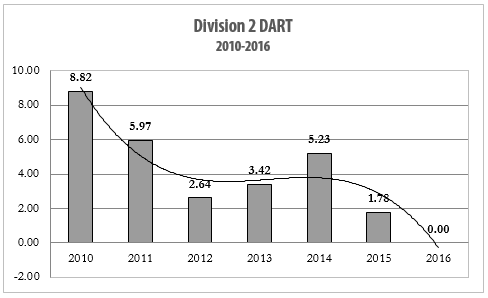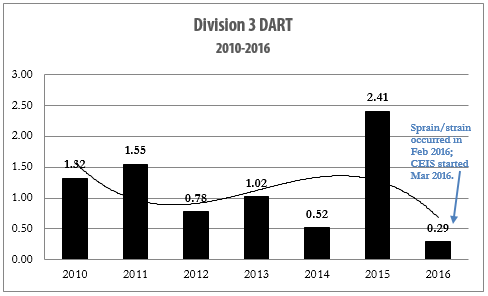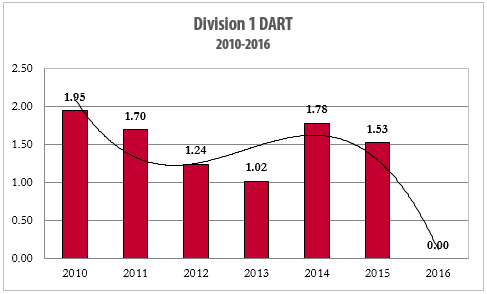Program Description
When AWS started with the manufacturing company in October 2015, the Division 1 and Division 2 facilities were each assigned a Certified Early Intervention Specialist (CEIS). After seeing the value AWS could provide, the company added a CEIS at their Division 3 facility in March 2016. In addition to the early intervention aspect, post offer pre-employment testing has been created for high risk positions at the Division 1 and Division 2 facilities. The testing allows the company to legally screen out candidates who cannot perform the essential physical functions of the jobs. Because candidates have physically demonstrated the ability and stamina to perform critical functions prior to being hired, the future risk of injury for those in the positions is reduced. To date, 77 candidates have been tested with a 91% passing rate company-wide, allowing the company to eliminate 9% of candidates deemed “high risk” since they cannot meet the physical demands of the job. This effectively reduces the long-term risk of injury and ultimately creates a more physically capable workforce progressing into the future. All aspects of the AWS program, from early intervention to post-offer testing, are proactive in nature and focused on reducing the instances of ergonomic injuries in the aging workforce.
Facility Demographics
3 shiftsNon-union700+ full-time employees; 400+ seasonal employees
History On-Site
Historically, the sprains/strains category has been the second leading cause of injury for the company, often accompanied by a significant number of restricted duty days. These injuries have cost approximately $615,000 in direct medical expense since 2010. AWS has reduced direct medical expenses, overall workers’ compensation claims, facility recordable incidents, restricted duty days, replacement labor dollars, workers’ compensation insurance experience rates, and several other indirect costs.
AWS Objective
The objective of AWS is to reduce direct medical expenses, overall workers’ compensation claims, facility recordable incidents, restricted duty days, replacement labor dollars, and workers’ compensation insurance experience rates.
Results Achieved
Sprain/strain cases have been virtually eliminated (along with direct medical costs)Restricted duty days have decreased significantly (reducing replacement labor dollars and other associated indirect costs)
77% of Possible Work-Related (PWR) cases were resolved without the need for outside medical care
Outside medical care:
75% of remaining employees sent to outside treatment were not initially seen by the CEIS
The remaining employees chose to see their own doctor, had injuries beyond the scope of what the CEIS can do (e.g. fractures), or needed additional medical treatment



